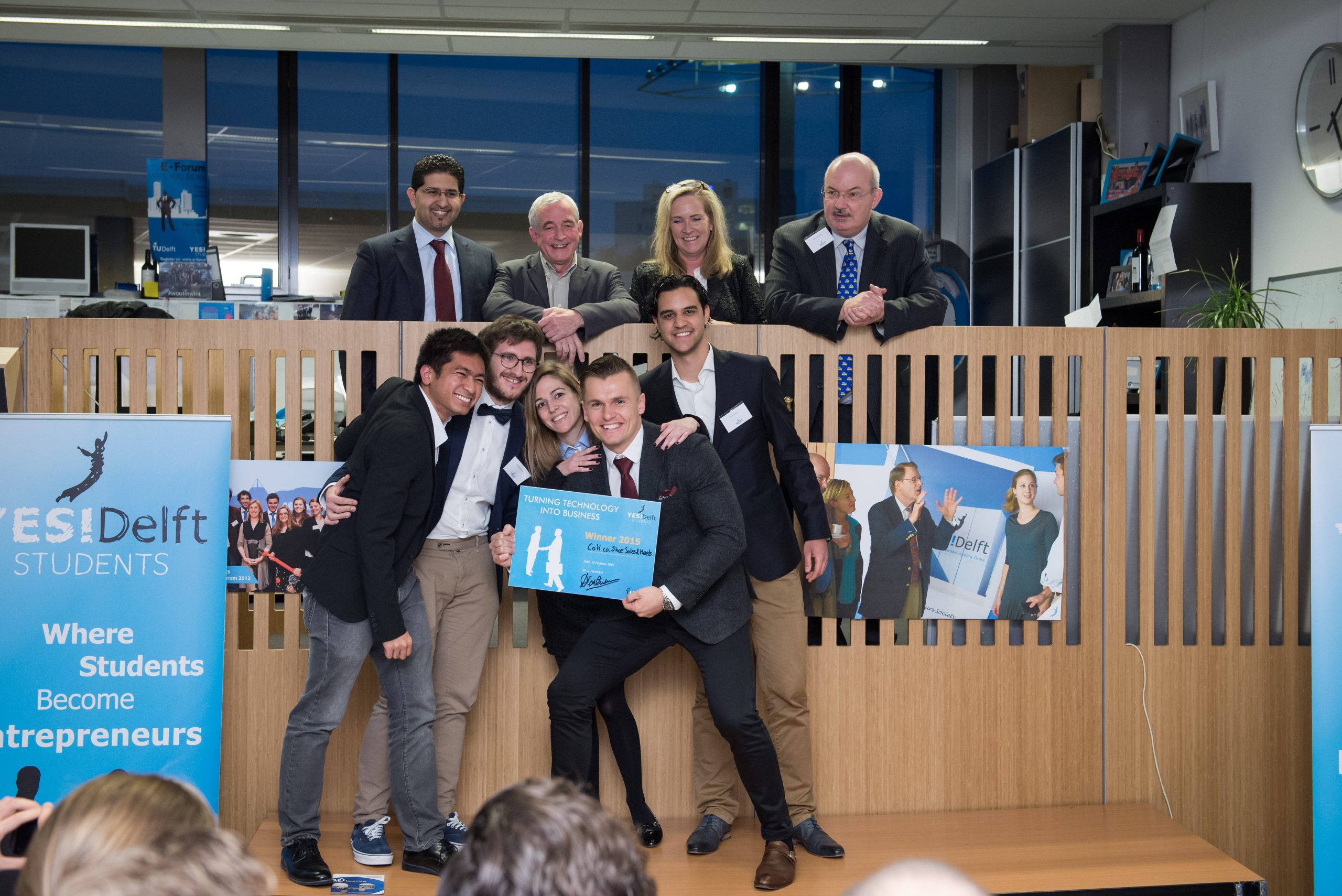“Genius is 1% inspiration and 99% perspiration”. This quote by American inventor Thomas Edison proves to continue to be valid in the course Turning Technology into Business. The final presentations of this course took place on the February 10, 2015 in the YES!Delft auditorium.
Students choose an existing technological concept from a list provided by the course coordinator to turn it into a product ready for business. Successful businesses like Ampelmann and Holland Container Innovations have their roots in this course. Dr. Dap Hartmann, course creator and the main lecturer, wants to help students understand the process of turning technology into business.
What makes a technological concept suitable for this course?
“All through the year I collect ideas of different technological concepts. These are concepts with room for creative development and are coming from researchers who are open to the students working with their ideas. The course is not meant as a free marketing advice for an inventor but as a chance for the students to create a business.”
You have a technology and a group of students, what is next?
“From the selection, students choose a concept they want to work on and who they want to work with. They start with the statement: We know how to do a certain thing because we have this technology. The students do not focus on the actual technology but its functionality. What are the boundaries of what it can do? They need creative thinking to come up with a broad range of applications.”
How do they get from a product concept to an actual business?
“The key is to work together with a potential customer to develop a product that solves their problem. It is not uncommon that the group changes their product completely after speaking with the customer. In relation to this, technology-unbundling is an important process. If your invention is a sensor for airbags; will you produce the sensor, the airbag or the actual car? The students have to identify where in the production chain they can reach the highest added value.”
In the afternoon session of the final presentations eight student teams presented their proposals to turn a technology into a business. CoH co. and the Archimedes drive are two examples of the teams participating in this course.
The five members of the CoH co. team presented a new way to use coconut waste. “We know how to make a wood-like material by compressing coconut husks without additional chemicals” is their starting point. The technology has thus far been used to produce wood-like boards for the building industry. CoH co. applies this technology to footwear and used it to design the soles of formal shoes. Producers of shoes made completely of plants, for the vegan market, are already very interested in buying the coconut shoe sole. Given the demand for sustainable products, the group expects the market will broaden to luxury footwear brands. At which point, it would be possible to increase the financial return of the waste for the communities that harvest it.
The Archimedes Drive team knows how to make a transmission with lower weight, smaller volume, higher efficiency and lower costs. The Archimedes drive is a new kind of transmission which is now working in lab conditions and moving towards a more real life prototype. The team focused on two initial applications: wind turbines and prosthetics. In these markets, businesses can greatly increase their market share with only a small performance improvement. To get into their final target market, the robotics industry, the Archimedes drive has to prove itself in the prosthetics industry first, so they can move from robotic arms for human use to the arm of an actual robot.



Comments are closed.